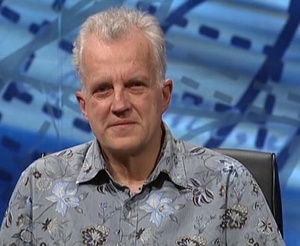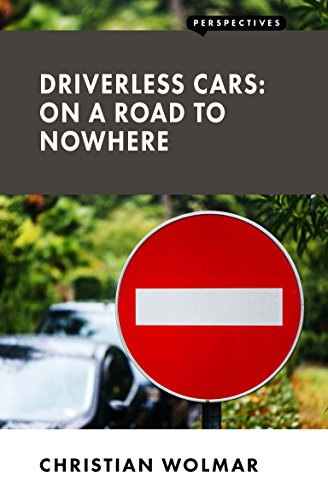The driverless car: A bubble soon to burst?
Car expert says journalists too gullible about high tech
Transportation writer Christian Wolmar, author of a book skeptical of driverless cars (2018), reflects hypelessly on his experience at an exhibition at Stuttgart earlier this year:
The reality is that there are no driverless cars anywhere today, not even in Silicon Valley, in the sense of a vehicle that could be left to its own devices to navigate city streets or even an A road. Nearly all the ‘driverless’ cars on the roads have an operator on board to take over in the event of an error and these interventions are frequent. As the accident in which a woman was killed by an Uber vehicle being tested in Arizona shows, failure to intervene can prove fatal. Earlier this year, I wrote a short book, Driverless Cars: On a Road to Nowhere, based on my scepticism about this technological future. I therefore thought that the vast hall at the Stuttgart Messe, with its 80 exhibitors and 1,500 delegates, would be a hostile environment. I could not have been more wrong. Many were as sceptical as I am…
Surprisingly, I met more doomsayers than purveyors of the autonomous driving dream. Christian Wolmar, “The dream of driverless cars is dying” at The Spectator

The exhibition was mostly suppliers. The big automakers have nothing to show and Wolmar senses a bubble about to burst.
Why do we hear that driverless, autonomous vehicles will soon be sharing the road with us? Wolmar blames “gullible journalists who fail to look beyond the extravagant claims of the press releases pouring out of tech companies and auto manufacturers, hailing the imminence of major developments that never seem to materialise.”
For good reason. A recent article at Wired airs the difficulties of teaching autonomous cars to avoid pedestrians,
“Consider Manhattan,” Rajkumar adds. And consider a big group of people crossing, specifically a person on the far side of a group from a robocar. “Among this group, one person is either short or starts running to cross quickly after the vehicle has decided to make a turn. Machine vision is not perfect.” And machine vision can get confused by optics, just like humans can. Reflections, the sun dropping low on the horizon, alternating light and dark patches on the road, not to mention heavy rain or snow, all can bamboozle the machines.
Then there’s the simple matter of people just acting weird. Perceptive’s [machine vision] system can pick up on tell-tale cues, but humans aren’t always so consistent. “There were about 7,000 pedestrian fatalities in the US in 2017 alone,” says Rajkumar. “The primary issue is the presence of significant uncertainty and sudden decisions that get made. Most pedestrians are very traffic-conscious most of the time. But, occasionally, a pedestrian is either in a hurry or changes their mind at the last moment and starts crossing the street, or even reverses direction.” Matt Simon, “Why Did the Human Cross the Road? To Confuse the Self-driving Car” at Wired
Simon remains optimistic that human drivers will “slowly go extinct.” Perhaps so. But the most likely way that will happen is that all usable roads will be built for or adapted to autonomous vehicles, on the model of railway tracks. If humans anywhere near the roads were only passengers, not drivers or pedestrians, most current safety concerns would be obviated. As Bill Dembski points out, AI can simply reshape the environment.
For example, the triumph of the autonomous vehicle would likely mean that many rustic roads fall into disuse (except by the drivers of non-fully automated vehicles). We can’t solve unforeseeable problems that suddenly crop up; it is impractical to try to solve all foreseeable problems and dangerous to solve only some of them. On the plus side, from the perspective of environmentalists, heedless damage to the ecology would be reduced because most people would not be able to go to places which did not accommodate fully automated systems. Traffic jams and political unrest could be more easily prevented because authorities would find it much easier to intervene to stop transportation to a crowded venue. China is putting a vehicle tracking system in place now, ostensibly to reduce traffic congestion. But actual control of (autonomous) vehicles, along the lines of a subway system, would be even more efficient.
In other words, in my view, the autonomous vehicle system that works well will be much more flexible than a train but exhibit the same power structure: You are not the driver anymore. It remains to be seen whether the public, a few decades from now, will think the price worth paying.
See also: Virtual Railroads and West Virginia Back Roads: AI’s Temptation to Theft Over Honest Toil (Bill Dembski)
and
Self-driving cars hit an unnoticed pothole
SaveSave
